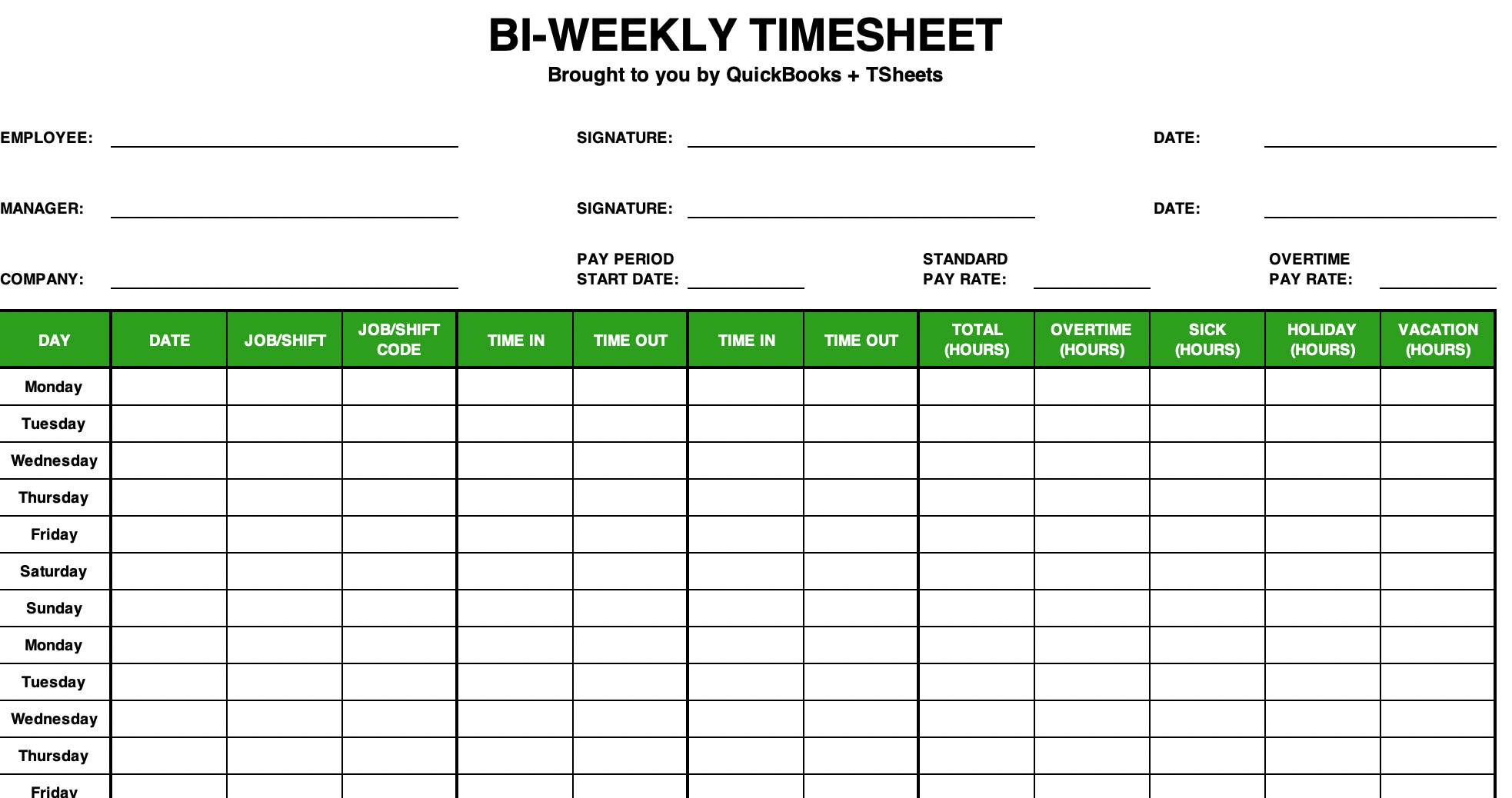Tracking employee time is crucial for business productivity. Free tools make this easy.
In today’s fast-paced business world, keeping track of employee hours is more important than ever. Accurate time tracking ensures that projects stay on schedule and within budget. It provides valuable insights into productivity and efficiency. Free employee time tracking solutions offer businesses a cost-effective way to manage their workforce.
These tools help monitor working hours without straining the budget. They assist in identifying patterns and optimizing workflow. Whether you’re a small startup or a large corporation, free time tracking tools can be a game-changer. They simplify the process of managing employee time. Dive into the world of free employee time tracking and see how it can benefit your business today.
Table of Contents
ToggleIntroduction to Time Tracking
Tracking time can seem tedious, but it’s essential for both businesses and employees. Free employee time tracking tools make this task simple and efficient. They not only help keep track of hours worked but also improve productivity and transparency. Let’s explore why time tracking is crucial and how it benefits everyone involved.
Importance for Businesses
![]()
Credit: logwork.com
Accurate time tracking is vital for businesses to thrive. It ensures every billable hour is accounted for, maximizing revenue. Knowing where time is spent helps businesses allocate resources effectively.
Time tracking tools also aid in project management. They provide insights into project timelines and budget usage. This information is crucial for planning future projects and setting realistic deadlines.
Moreover, these tools enhance accountability. They create a transparent work environment, building trust between employers and employees. Isn’t it reassuring to have a clear picture of where time is going?
Benefits for Employees
For employees, time tracking offers clarity. It helps them understand how they utilize their work hours. This can lead to better time management and increased productivity.
Employees can also use time tracking to highlight their efficiency. It provides concrete data to support requests for raises or promotions. Knowing your worth is empowering, isn’t it?
Additionally, tracking time can reduce burnout. It ensures employees are not overworking themselves. Regular breaks can be scheduled, promoting a healthy work-life balance.
Have you ever wondered how time tracking could change your work routine? It’s worth considering how it might streamline your day and improve overall job satisfaction.
Types of Time Tracking Tools
Understanding the types of time tracking tools is crucial for businesses. These tools help monitor employee productivity and manage work hours effectively. Choosing the right tool can streamline operations and enhance efficiency.
Manual Vs. Digital
Manual time tracking involves using paper sheets or punch cards. It requires employees to manually record their hours. This method can be prone to errors and time theft. Digital tools, on the other hand, automate the process. They provide accurate and real-time tracking, reducing human error.
Digital tools save time and improve accuracy. They offer features like automatic clock-in and clock-out. This makes them a popular choice for modern businesses.
Popular Software Options
Several software options are available for digital time tracking. Tools like Clockify and Toggl are favored for their user-friendly interfaces. They offer features like project tracking and detailed reporting. These tools help businesses analyze productivity and optimize work schedules.
Another popular choice is Time Doctor. It offers features like screen monitoring and productivity alerts. These features ensure employees stay focused and efficient. Choosing the right software depends on your business needs.
Features of Free Time Tracking

Credit: myhours.com
Free employee time tracking tools offer essential features for businesses. These tools help companies manage time efficiently. They offer insights into employee productivity without financial burden. Despite being free, they provide valuable functionality. Let’s explore their basic features and limitations.
Basic Functionality
Free time tracking tools often include simple clocks. Employees can clock in and out easily. These tools record work hours accurately. They offer a user-friendly interface. Managers can view and approve time logs. This helps in payroll processing. Some tools allow project tracking. This ensures work is on schedule. Reports can be generated to analyze productivity.
Limitations to Consider
Free tools may lack advanced features. They might not integrate with other software. Support options are often limited. Storage capacity may be restricted. This impacts historical data retrieval. Customization options might be minimal. Free versions may display ads. This can be distracting for users. Security features might not be robust. Consider these factors before choosing a tool.
Implementing Time Tracking
Free employee time tracking helps businesses monitor work hours efficiently. This tool improves productivity by providing accurate records. It supports better management without extra costs.
Implementing time tracking in your workplace can be a game-changer for productivity and accountability. It’s not just about logging hours; it’s about understanding how time is spent and making informed decisions to boost efficiency. Whether you’re a small business owner or a manager in a large corporation, having a reliable system in place can help you optimize workflows and empower your team. So, how do you get started? Let’s break it down.
Steps for Setup
The first step in setting up time tracking is choosing the right tool. Look for software that aligns with your business needs, offers ease of use, and integrates well with your existing systems. Once you’ve selected the tool, create a plan outlining the goals you want to achieve through time tracking. Are you looking to improve project management or reduce unnecessary overtime? Clarity in your objectives will guide the setup process. Next, involve your team in the process. Share the benefits of time tracking, and how it can make their workday more efficient. Encourage feedback during the setup phase to address any concerns they might have.
Employee Training Tips
Training is crucial for successful implementation. Start with a simple demonstration of the tool, highlighting features that will make their tasks easier. Visual aids or video tutorials can be particularly effective. Make the training interactive. Ask your employees to explore the tool and perform basic tasks during the session. This hands-on approach helps them gain confidence and familiarity with the system. Consider ongoing support. Offer resources like a FAQ page or a help desk to assist your team whenever they face challenges with the tool. How can you ensure your employees feel comfortable with this new change? Implementing time tracking is an opportunity to foster collaboration and transparency. By equipping your team with the right tools and knowledge, you’re setting the stage for a more productive and harmonious work environment.
Overcoming Challenges
Tracking employee time can seem like a daunting task, but it doesn’t have to be. Many businesses, especially those just starting out, face challenges in managing employee hours effectively. Understanding these hurdles is the first step in overcoming them. Let’s dive into common issues and discover solutions and best practices that can simplify the process.
Common Issues
One major issue is the resistance from employees. They may feel like they’re being micromanaged or their trust is being questioned. This can lead to a lack of engagement and potential disputes.
Another challenge is the accuracy of the recorded time. Manual entries can lead to errors, causing discrepancies in payroll.
Additionally, businesses might struggle with the integration of time tracking tools with their existing systems, which can disrupt workflow.
Solutions And Best Practices
To address employee resistance, communicate openly about the benefits of time tracking. Explain how it can lead to fair compensation and better workload management.
Leverage automated tools to minimize errors. Consider using apps that offer real-time tracking to ensure data accuracy.
When it comes to integration, choose tools that seamlessly sync with your current systems. This reduces disruptions and enhances productivity.
Have you ever thought about how these tools can enhance trust rather than hinder it? When used correctly, they can create transparency in operations.
Remember, the goal is to make time tracking an ally, not an adversary. By addressing these challenges head-on, you can pave the way for smoother operations and happier employees.
Privacy and Ethical Considerations

Credit: quickbooks.intuit.com
Understanding privacy and ethical concerns in free employee time tracking is crucial. Protecting employee data and maintaining transparency fosters trust and compliance. Implement clear policies to ensure data security and respect employee boundaries.
When implementing free employee time tracking tools, privacy and ethical considerations become crucial. Understanding the balance between effective monitoring and respecting employee privacy can make a significant difference in workplace morale and productivity. As businesses embrace technology, it’s essential to ensure these tools are used responsibly and ethically. How can you respect privacy while still achieving business goals?
Balancing Monitoring And Trust
Effective time tracking can enhance productivity, but it shouldn’t feel invasive. It’s about finding the right balance. Employees should feel trusted, not spied on. Open communication is key. Share the purpose of time tracking openly. Make sure your team knows it’s about efficiency, not micromanagement. Consider your own experiences: Have you ever felt monitored too closely? How did it affect your work? Use this reflection to guide how you implement these tools.
Data Security Concerns
Data security is a top priority when using time tracking tools. Your employees’ data must be protected. Ensure the software you choose complies with data protection laws. This means using platforms that encrypt data and have robust security measures in place. Imagine the trust you can build by safeguarding your team’s information. Would you feel confident sharing your data if you knew it was secure? Your employees deserve the same assurance. Regular audits and updates to your data security policies will help maintain this trust. Engage with your team about their concerns, and address them promptly. Keeping an open dialogue about security can foster a stronger, more trusting workplace environment.
Evaluating Success
Evaluating success often starts with tracking employee time effectively. Free tools can simplify this process, offering insights into productivity. These insights help managers optimize workflows and enhance overall efficiency.
In the fast-paced world of business, understanding how well your employee time tracking system works is crucial. Evaluating success is not just about seeing numbers on a screen. It’s about understanding the real impact on productivity and employee satisfaction. By carefully assessing these areas, you can fine-tune your approach and maximize the benefits of time tracking.
Measuring Productivity Gains
When it comes to measuring productivity gains, you need clear, actionable data. Ask yourself: Are your employees completing tasks faster? Are they meeting deadlines more consistently? Compare project completion times before and after implementing the time tracking system. This helps pinpoint any increases in efficiency. Consider using charts and graphs to visualize these improvements. Such visual aids make it easier for you and your team to grasp the scope of progress. Quantifying productivity gains ensures your time tracking tool is more than just a digital clock; it’s a catalyst for growth.
Feedback from Employees
Employee feedback is a goldmine for insights into your time tracking system’s success. Have you asked your team how they feel about it? Are they more aware of how they spend their time, or do they feel micromanaged? Encourage open discussions and anonymous surveys to gauge their opinions. My friend once shared how a simple feedback session revealed that team members felt stressed by constant reminders. This led to adjustments that improved morale. Listening to your employees can lead to unexpected improvements, boosting both satisfaction and efficiency. The goal is to create a system that supports, rather than hinders, their work.
Future of Employee Time Tracking
The future of employee time tracking promises exciting changes. New tools and technologies are reshaping how companies track time. Businesses aim for better efficiency and accuracy. This evolution also responds to changing workplace dynamics. Let’s explore these future trends in detail.
Trends in Technology
Technology continues to change employee time tracking. AI and automation are becoming key players. These technologies reduce manual errors and save time. Cloud-based solutions offer flexibility and real-time data access. Mobile apps allow tracking from anywhere, anytime. This convenience helps both employers and employees.
Biometric systems are also gaining popularity. They offer secure and precise tracking. Employees use fingerprints or facial recognition to log hours. This method reduces time theft. Technology ensures accurate records and improves productivity.
Evolving Workplace Needs
Workplace needs are constantly changing. Remote work is more common now. Flexible hours are a growing trend. Traditional time tracking methods may not suit these changes. Employers need to adapt to new work styles.
Free employee time tracking software meets these evolving needs. These tools help manage diverse work schedules. They also support remote teams effectively. Employers can monitor hours and productivity easily. This adaptability is crucial for future success.
Frequently Asked Questions
How Can I Keep Track of Employee Hours for Free?
Use free tools like Clockify or Toggl to track employee hours efficiently. These platforms offer basic features to log time. Google Sheets can also help by creating simple time-tracking templates. Encourage employees to update their hours regularly for accurate records.
Is Clockify Actually Free?
Clockify is free with unlimited tracking, projects, and users. Paid plans offer advanced features. Enjoy basic functionality at no cost.
Does Google Have a Free Time Tracker?
Google does not offer a dedicated free time tracker. However, Google Calendar can help manage and organize your schedule effectively. It allows users to set reminders and track events, providing basic time management features. For advanced time tracking, consider third-party apps integrated with Google Workspace.
Is There a Free Calendar to Keep Track of Work Hours?
Yes, several free calendars help track work hours. Google Calendar offers easy scheduling and reminders. Clockify provides time tracking with a calendar view. Both are user-friendly and accessible on multiple devices. Consider these tools to efficiently manage work hours without any cost.
Conclusion
Free employee time tracking tools offer great benefits. They simplify work processes. They help in managing employee hours efficiently. Businesses can save costs with these tools. Tracking time accurately boosts productivity. It also helps in maintaining transparency. Employees feel valued when their time is tracked fairly.
Choosing the right tool is essential. It should be easy to use. Look for features that match your needs. Consider trying different tools. Find what works best for your team. With the right tool, managing time becomes effortless. Start exploring options now for better time management.



